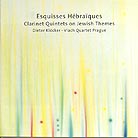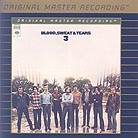 |
||||||||||||||||
| Using my Cairn Fog, Jolida JD-100 and the Eastern Electric MiniMax as alternating sources and the Unison Research Unico as my standby K-driver, both the audio-technica ATH-W1000s and Sennheiser HD-650s would see duty as regular examples of dynamic headphones while the AKGs would plug into the 4-pin socket via a loaner length of James Serdechny's Stefan AudioArt cable. |
||||||||||||||||
 |
||||||||||||||||
Very curiously and only on certain recordings like Sheetal's Love of Ages [Triloka/Artemis 82039], the 32 telegraphed strange smoke signals of being underpowered already on the 100dB-efficient W1000s, not by refusing to provide adequate output levels -- far from that, in fact -- but by sounding distinctly dirty and frayed around the edges. It suggested onset of distortion though that's not what it was. Lead vocals were clear and properly delineated regardless of volume. It was background chorus voices and accompanying instrumentals that had a grungy tinge to them. This caused me to plug my wooden cans directly into the headphone sockets of both the JD-100 and MiniMax just to confirm that these tubed players hadn't suddenly developed a little sandstorm inside their tubes. Because that's what it sounded like - like very fine sand in the air that makes faraway things obscure and grainy. |
||||||||||||||||
 |
||||||||||||||||
| Other albums were peachy, however. I couldn't correlate apparent recording challenges of dynamics, general mastering quality or other unusual ingredients with these strange and isolated incidents which occurred exclusively in the background and most notably with low bass instruments and in really dense interludes with lots of intersecting lines. On the 'right' albums which most of them were -- and no matter the playback level, no matter the amount of truly low, scary and dynamic bass -- the amp would sail right through the wildest passages without any flinching whatsoever. I couldn't figure out what was going on and eventually just stayed away from the 'cursed' CDs. To be sure, those did not misbehave in preamp mode. This conclusively eliminated any flippant bad-recording retort. These same misbehavin' albums over the Sennheisers had less of this smog tinge but still some of it - NYC in the fall instead of LA during the summer. While we're at UPSS or Unexplained Power Supply Surfing, I tried the 32 briefly on the Avantgardes whose 103dB sensitivity, to be fair, acts as a veritable atomic microscope to discover noise where lesser instruments report perfect silence. While the power supply hum via the 120wpc eVo was not what I'd hoped for but nearly anticipated with a true budget tube piece, the massive noise at full attenuation which disappeared one 'click' up from full signal mute was unexpected to say the least. With 15dB less of magnification power on-hand, the Gallos still exhibited this very audible white-noise tweeter hiss and power supply midrange hum with the 32's pot once again to 0. And once again, this massive noise disappeared just a skoch up from mute. Pausing the source during average playback levels now netted mild power supply hum audible from up to 4 feet away, the kind that's unfortunately in line with much affordable tube stuff. This kind of faint hum was not audible at the listening seat at all and thus did not intrude directly on my evaluation sessions. |
||||||||||||||||
 |
While Tash Goka indicated that the high-voltage leg for the AKGs is a parallel circuit and bypassed in preamp mode, I couldn't help but speculate that part of this noisy behavior was somehow related. And though I tried hard to forget that I knew this about our component under review, I did notice a certain veiling and homogenizing of well-known albums which the twice-the-money MiniMax pre despite its high gain structure does not produce. Of course I'm not really in-the-know when it comes to acceptable behavior for a $600 multi-function tube preamp. The broad palette from lush/romantic to lean/precise and elegant/suave which the $1,150 MiniMax affords with the simple swap of at the most three tubes perhaps has me spoiled. I had deliberately pressed the 88dB Gallos into service to become my stand-in for average sensitivity speakers of the sort prospective buyers of the Antique Soundlab preamp might use. Despite these efforts to be fair, I wasn't as impressed as I wanted to be in my --perhaps unrealistic -- mission for affordable super sound. I missing the kind of sparkling transparency I'm used to from admittedly more expensive tube and solid-state preamps. For example, the $699 HeadRoom Home (no remote, no tubes, no AKG functionality but usable as a preamp and to drive regular 1/4"-jacked 'phones) strikes me as a fierce competitor which I've heard without harboring any sentiments whatsoever about inferior noise floors. |
|||||||||||||||
In general, the Head's preamp performance struck me as solidly competent yet slightly veiled in the transparency races which might be exactly what should be expected from a piece at this price that doesn't sell direct but through dealers. Feeling certain that this impression of baseline competence held steady throughout extended sessions and regardless of material, I then abdicated from using the Head in the big-but-shrunk rig and reverted to divining its headphone prowess in my usual 'office system' around the MiniMax and the JD100/Marantz CDR630/Unico stacks. |
||||||||||||||||
The first test would be against the headphone sockets of the JD100 and MiniMax vs. the one in the Head, using either the audio-technicas or Sennheisers. How much more performance would one get by going the outboard dedicated-amp route? |
||||||||||||||||
 |
||||||||||||||||
 |
||||||||||||||||
I cued up Javier Ruibal's Sahara [Riverboat 1030], a killer album which introduces this brilliant songwriter from Cadiz to non-Spanish audiences. |
||||||||||||||||
Ketama-esque Flamenco/Salsa plus North-African influences (which on the Cuerpo Celeste album on Ariola 74321 35809-2 even includes the brilliant oudist Simón Shaheen and guitar legend Gerardo Nuñez), burbling rhythms, Latin big-band brass and Cuban piano, Middle-Eastern strings like Youssou N'Dour's on his latest album Egypt and amplified solo violin in an L.Shankar/Gingger vein all come together in sophisticated melodies and lyrics dedicated to the beautiful sex. "El Náufrago Del Sáhara" would be the track based on a swaying 6/8 rhythm and the violins of the Sinfonieta de Sevilla. With the 650s, the MiniMax by itself sounded just a bit leaner than going offboard but kept the intermingling between strings, Alfonso Gamaza's electric bass, Tito Alcedo's lutes and mandolas and Javier's guitar better separated and distinct. Certain oud solos also had more bite on the leading edge. The 32 wasn't as crisp and defined around the outlines but made Javier's vocals appear slightly bigger and emphasized, creating a more selective focus on the voice that relegated accompaniment a bit farther into the background. |
||||||||||||||||
| On balance and with other recordings as varied as Dieter Klöcker's Esquisses Hébraïques with the Vlach Quartet Prague [CPO 000 630-2], of clarinet quintets on Jewish themes and of rare scores unearthed from a private collection performed on a rebuilt vintage clarinet; to a Mobile Fidelity Sound Lab hybrid pressing of Blood, Sweat & Tears 3 [UDSACD 2013]; I found it difficult to justify the expense of an additional amplifier+interconnect. The differences were of a sideways nature of small flavor variations rather than going upwards to a higher plateau. It felt like trading white for beige marbles rather than advancing to semi-precious stones. Going to the wooden 'phones from Japan which make a rather magical match with the MiniMax created the same difference as with the Sennheisers but expanded the W1000s' dynamic envelope yet further. Here the Head did equate to a modest advance but in the end, still one that seemed rather insignificant considering the added expense and box count. Was this a function of the MiniMax headphone output being too good for the money or of the ASL offering not quite enough to clearly pull ahead? |
||||||||||||||||
 |
||||||||||||||||
| Jacking the W1000s into the JD-100's front panel socket lowered the color temperature vis-à-vis the MiniMax. It also loosened the molecular weave of density in the musical fabric. My JD-100's headphone output has less harmonic saturation than the MiniMax and is less overtly tube-powered. Moving to the ASL thus wasn't unlike moving to the Eastern Electric piece. It resulted in more timbral pop, deeper and richer tonal colors. Some of this scaled back again when I plugged the German cans into the 32 and even more so when the HD-650s attached directly to the JD-100. That latter scenario nearly maxed out available headroom to confirm that just like their reputation, the Sennheisers do generally prefer the drive of a dedicated amp to sound their best. Verdict? On the W1000s, this offboard advantage was so small as to arguably not warrant it. On the Sennheisers as compared to the Jolida CDP, the Head provided more control and higher output levels. |
||||||||||||||||
 |
||||||||||||||||
Performing the same comparisons between the AKG K1000s driven by either the Head or the hybrid integrated amplifier gave the clear nod to the Italian stallion for more definition, articulation and insight into the deeper recesses of the soundstage - and this despite the fact that a 120-ohm load for a 4 to 8-ohm amplifier designed for speakers doesn't necessarily equate to winning results at all. The same dirtiness mentioned earlier reappeared during this juxtaposition with the 32 on certain recordings on the fringes of the soundstage. Other albums like Nikki Reiser's R&B/Jazz meet What's a Women [BMG 74321 56318 2] confirmed these impressions. |
||||||||||||||||
 |
||||||||||||||||
| At $1,695 for the non-phono version, the Unico is significantly more expensive than the ASL unit and thus not a fair comparison. Still, it was the only other in-house one-box option I had for these headphones. More important really is that the MGHead DT/OTL 32 drove the cans properly as well which is to say, provided proper output levels and necessary control. That makes it the first $600 unit I've heard I can say this about. That something else for nearly three times its asking price provides additional aural incentives shouldn't really came as much of a surprise. In the end -- and despite its all-in-one package deal appeal and very attractive pricing -- I remained a bit concerned about the 32's innate noise levels and its peculiar headphone-only penchant for selectively sounding downright dirty on certain CDs and truly commendable on others. Had this behavior not remained persistently fixated on specific recordings, I'd have suspected some kind of intermittent malfunction. But since it remained exclusive to the same recordings no matter what day and only when used as a headphone device, I had to rule out defective behavior. And make no mistake - had all recordings sounded as good as those not affected, I would have called the ASL amp a highly credible solution for K-1000 owners. The voicing differences between the Sennheisers and audio-technicas which the $2,000 Aural Audition just reviewed had portrayed with pristine obviousness were far less significant and apparent over the Head whose resolving power operates at a lower level. As I've already said in the Audition review, the MGHead DT/OTL 32 is more about musical values and less about higher audiophile ambitions which, you might argue, aptly describes the budget tube sector in general. In closing, I've had far too many highly favorable tradeshow encounters with ASL gear and Reference 3A speakers to be too discouraged about this one model's limited success to float my little boat outside of sheer wonderment that it really does drive those AKGs in utter defiance to paper power and common wisdom. |
||||||||||||||||
 |
||||||||||||||||
 |
||||||||||||||||
|
US distributor's website
|
||||||||||||||||
 |
||||||||||||||||